Air plants, also known as Tillandsia, can be your ideal green friend if you are newly hooked on keeping and maintaining the balcony garden at your residence. They are known for their unique characteristics and easy-to-handle features.
These plants naturally intake water and nutrients from the environment and do not need any soil to bloom. In case you are someone who likes small plants that you can decorate in a little vase or glass globe, Tillandsia can be just the right fit for you!
To give you a better perspective on these adorable air plants, we have curated a detailed Tillandsia care guide. So, without any delays, let’s take a look!
Air Plant: Brief Introduction
Tillandsia is another name for air plants, and there are around 650 different species of this evergreen spread across the globe. They are known for their unique features, like their soilless nature and other rare growing habits. Other than this, they easily cling to any surface or whatever is readily available.
This means that you can easily put them in a vase or glass globe. Moreover, you can even let them stay on your lawn, and it will assist in elevating the entire aesthetics of your place. Most of these plants are epiphytes, but some are also aerophytes, suggesting that they require little to no effort in terms of taking care of these air plants.
Keep reading to really know which species of vegetation comes under the Tillandsia species.
Different Varieties of Air Plant
We understand how you must be interested in finding more information on the air plants. For this reason, we have mentioned thirty-four air plant varieties for you to choose your favorite from.
Xerographica Thick Leaf Form
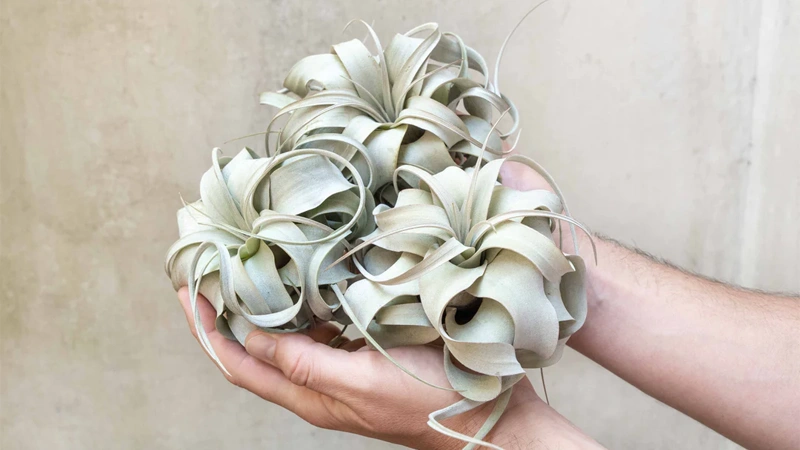
Popularly known as the ‘Queen of Air Plants,’ Xerographica is a quintessential one, as its structure and blooming spikes make your lawn look one of a kind. Moreover, it can tolerate intense bright light while going through long periods without water.
Ionantha Guatemala
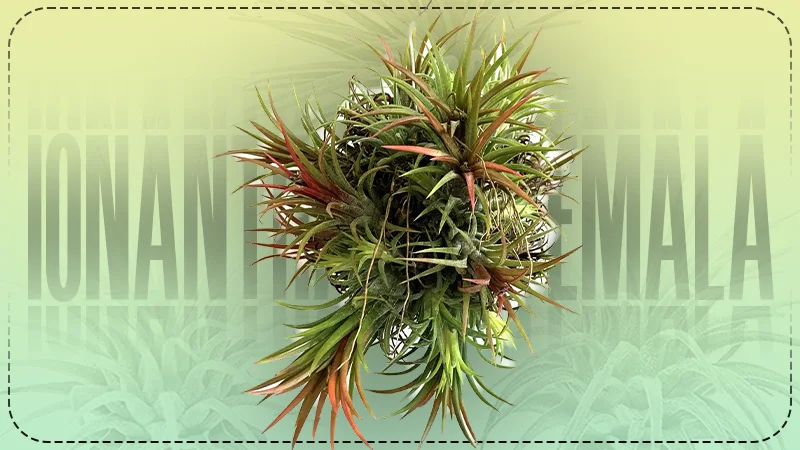
Second on this list is the Ionantha Guatemala, which is the most popular air plant. Most beginners choose this specimen when trying their hand at gardening. These beautiful plants grow purple or red buds during their blooming phase.
Harrisii
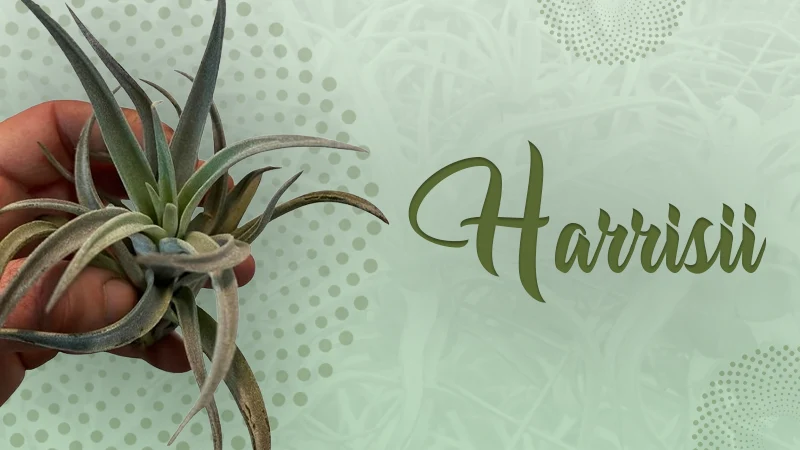
Harrisii is a very soft air plant that was named after a Tillandsia explorer who was murdered in the late 1900s. This can easily withstand full sunlight, with watering at least once every week. You can decorate it using a bowl, terrarium, or by being mounted with a piece of wood.
Ionantha Pink
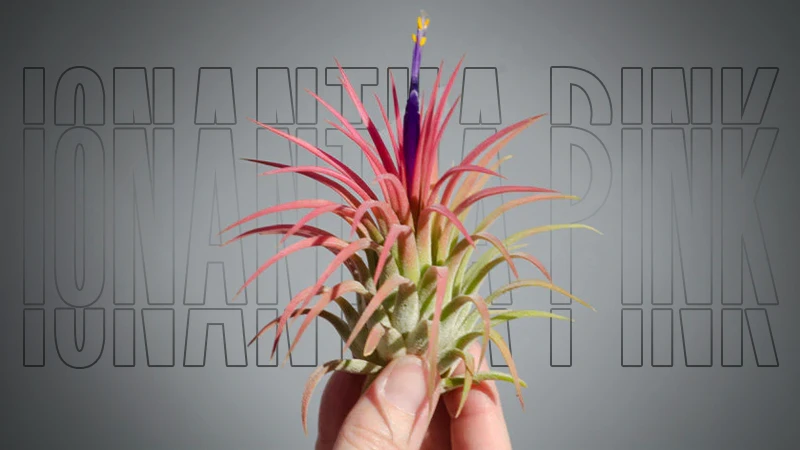
If you like bright pink flowers and plants, then this is the one you can go for. This Tillandsia can grow easily, and for watering, you can either submerge it in water or spray it in mist form. Furthermore, the little, beautiful buds of this plant will instantly elevate your space, giving it a more vibrant appeal.
Tillandsia Caput Medusae
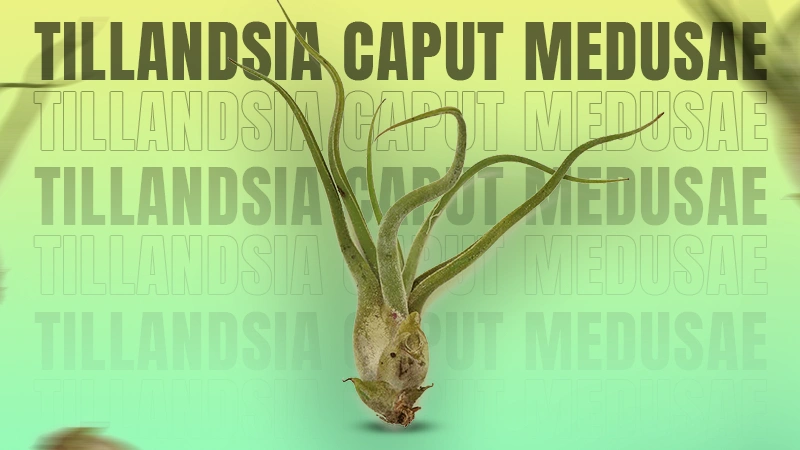
The Caput Medusae is Tillandsia with a silvery green color and hues of purple throughout the plant. Most of the time, they are grown on the branches of trees, especially in areas of direct, bright sunlight. They have another extended species known as ‘Sonoran Snow,’ which is a bit more frosted in experience.
Ionantha Red
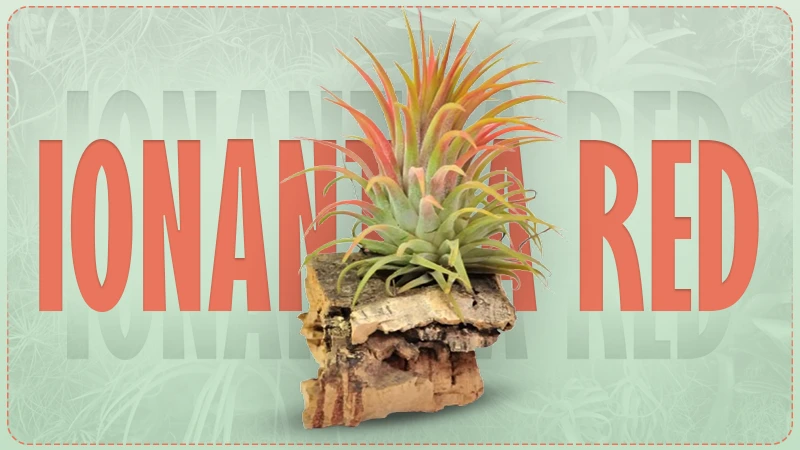
With red leaves and a silvery base, this Tillandsia grows in bunches. It is perfect for your lawn, especially as a beginner, as they require little to no care. Further, it can be a relaxing and exciting experience and further assist in reducing stress. This is also pet-friendly.
Ionantha Druid
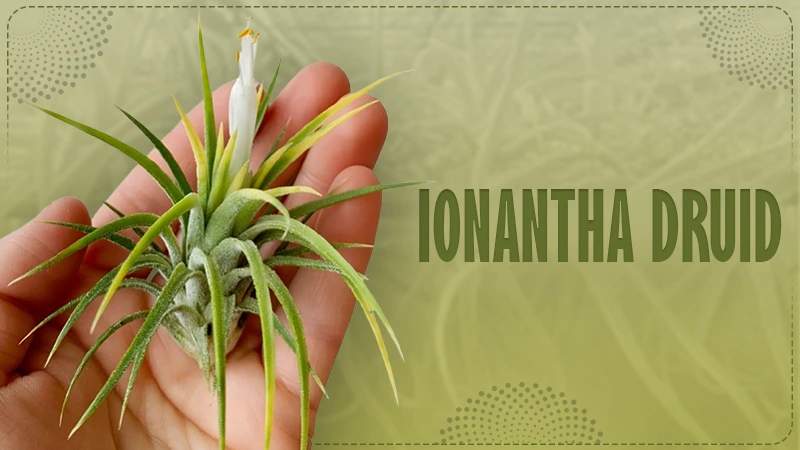
The Ionantha Druid is another air plant that will look pretty sitting in the corner of a room. From shaded leaves to yellow buds, this Tillandsia evolves from green to yellow, which is a thrilling experience to watch. Moreover, it is one of the rarest plants to exist.
Tenuifolia Bush
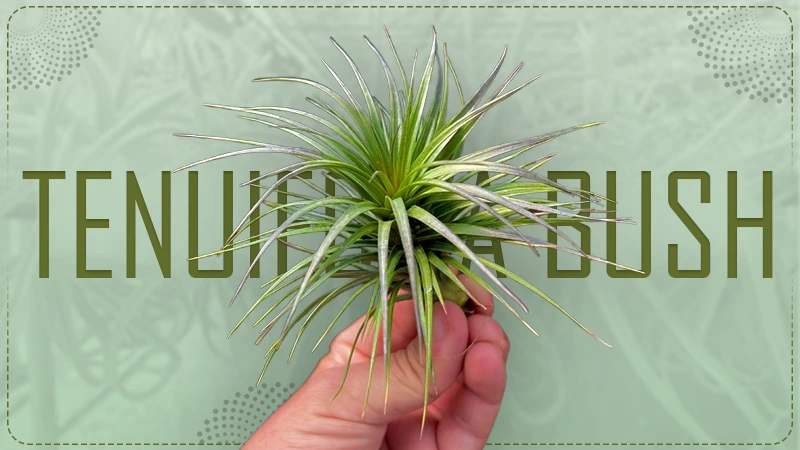
Tenuifolia Bush is a specimen with pink or blue flowers. It can elevate your sidewalk or lawn area with its grass-like characteristics. This is one of those air plants that are extremely effortless to take care of, with low aqua requirements for complete growth.
Ionantha ‘Fat Boy’
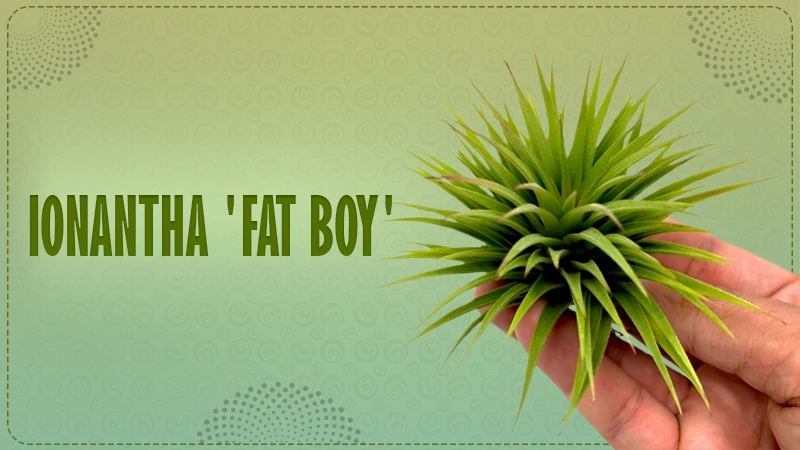
Ionantha Fat Boy goes from a small palm-sized plant that gets chubbier, further transforming into a flourished symmetrical bush. Its leaves are of a light-green color that, over time, grows in tints of red and pink. The specialty of this one is that it blossoms equally in both size and height.
Capitata Peach
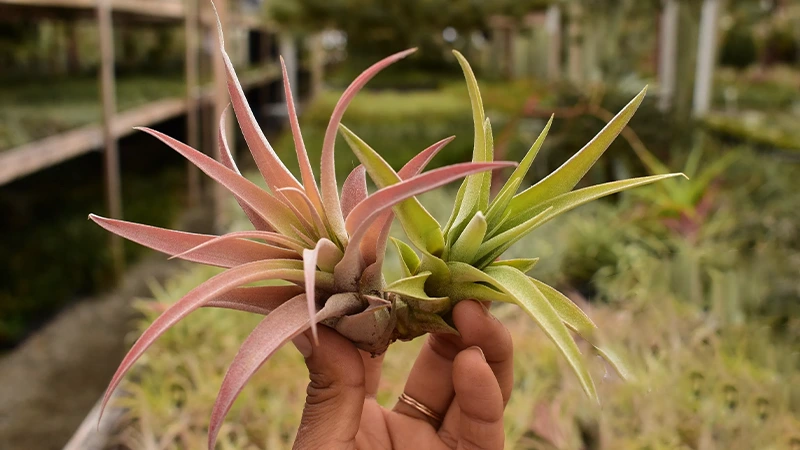
The Capitata Peach air plant is known for its color and soft leaves that transform from green to the lightest shade of pink. This is native to the Guatemala, Dominican Republic, and Mexico regions. It can be on trees and also in the rock bed in your garden.
Ionantha Lavender
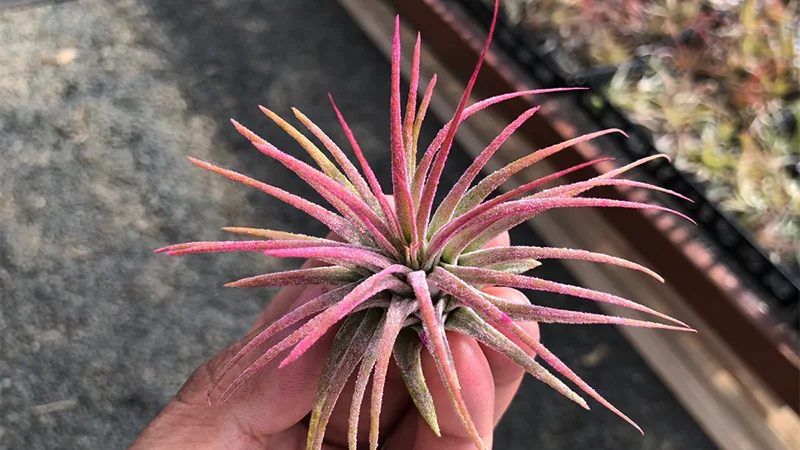
A very beautiful plant with lavender leaves that efficiently and quickly grow buds with time. They are often found in bunches in the garden area. Other than this, they can easily survive any season; however, they end up growing beautifully during the bright sunny weather.
X Betty
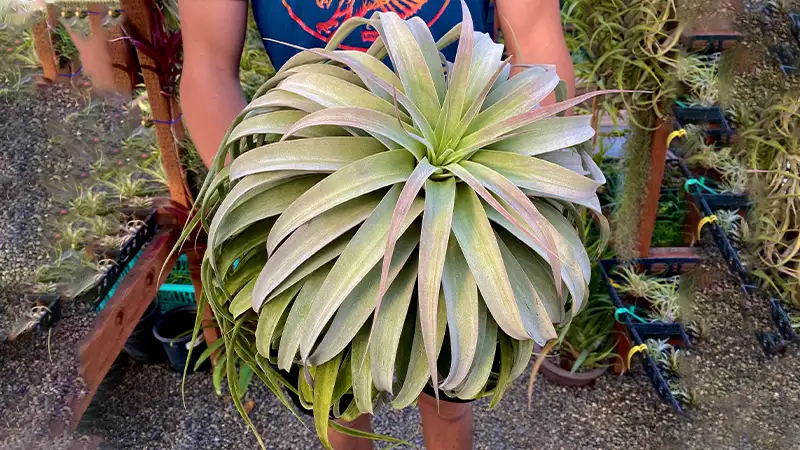
Looking for huge plants that can act as props for enhancing your garden interior in the easiest way possible? Then you can consider this hybrid plant, which is the right fusion of Xerographica and Brachycaulos. It can easily reach around 200 mm in diameter.
Peru Inca Gold Large Clump
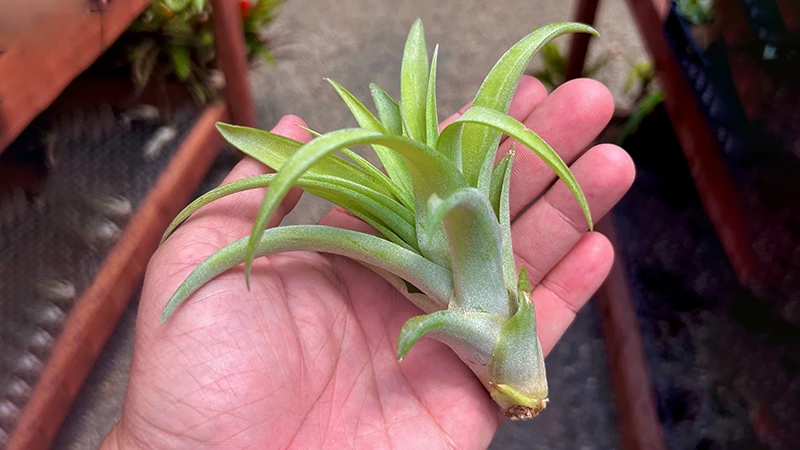
Peru Inca Gold large clump is a medium- to large-sized plant that is fragrant along with narrow, stiff, and silvery golden leaves that are branched in all directions. At the right time, it leads to a growing bloom with large yellow flowers that can survive in both intense and dull sunlight.
Diaguitensis
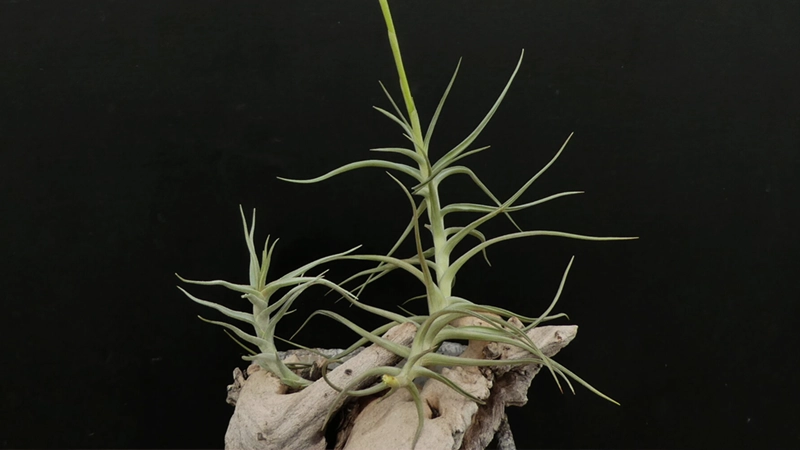
Native to Paraguay, Brazil, and northern Argentina, the Diaguitensis is a drought-tolerant air plant that grows along with a stem. It can grow amongst exposed rocks and scrubby leaves. They bloom into large white flowers with a mild citrus scent to them.
Araujei Purple Star
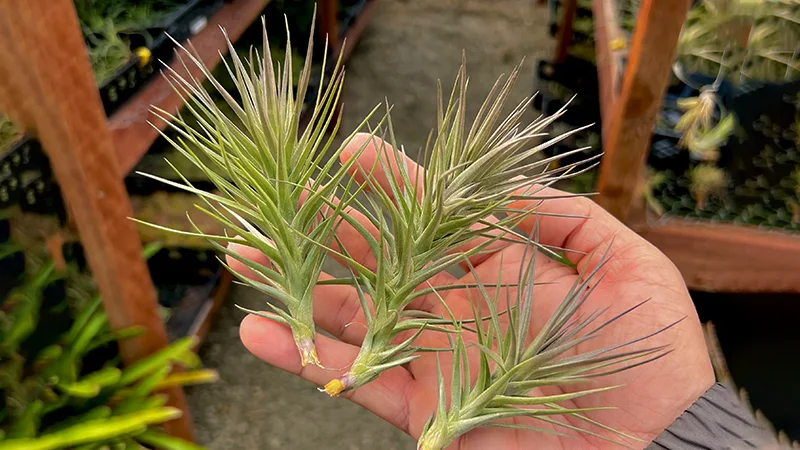
The Araujei is among the types of air plants that grow alongside a stem. These beautiful specimens have a very light purple color in their tips, while the other half of the plant is green. During the blooming season, you might also witness pink flowers in this mix.
Araujei x Tenuifolia
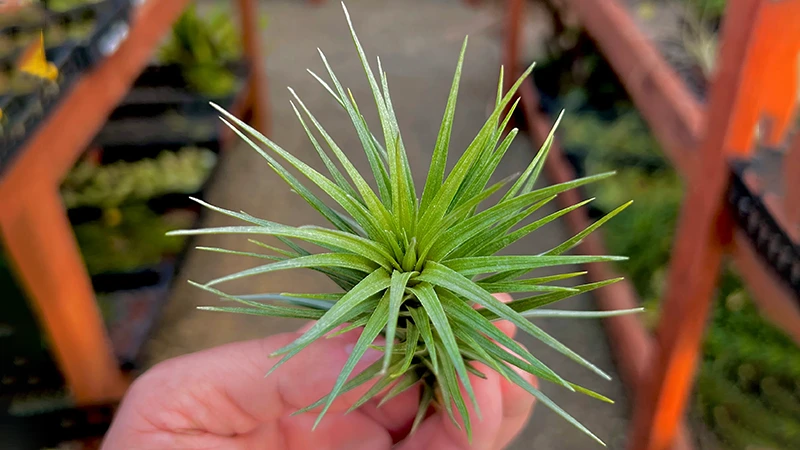
Araujei x Tenuifolia is a hybrid plant that is of a light green color and can grow up to a height of 1ft. Similar to the last one, you can witness pink buds blossoming out of this species during the blooming season. Moreover, the vibrant contrast of this plant with the lavender and green is phenomenal.
Sweet Isabel (Paleacea X Tectorum)
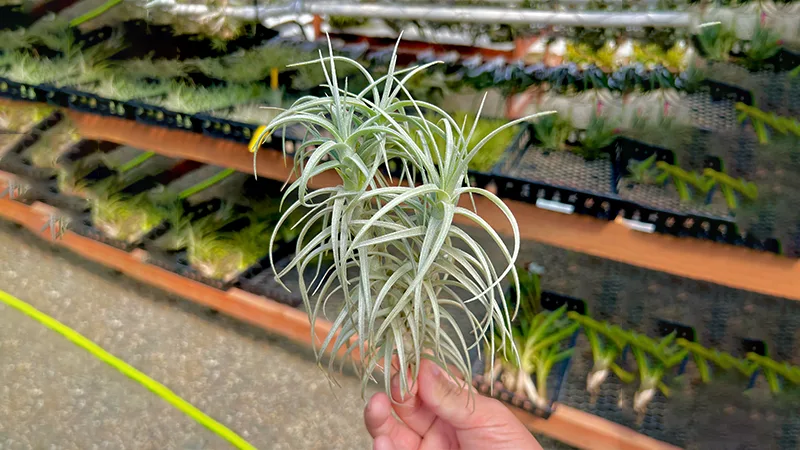
As you already know, this hybrid plant is known as Sweet Isabel. In the blooming season, you can find long, narrow, and green leaves blossoming out of its thin stem. Other than this, you can plant this Tillandsia in both outdoor and indoors, as it can survive any weather and temperature.
Ionantha ‘Tall Boy’
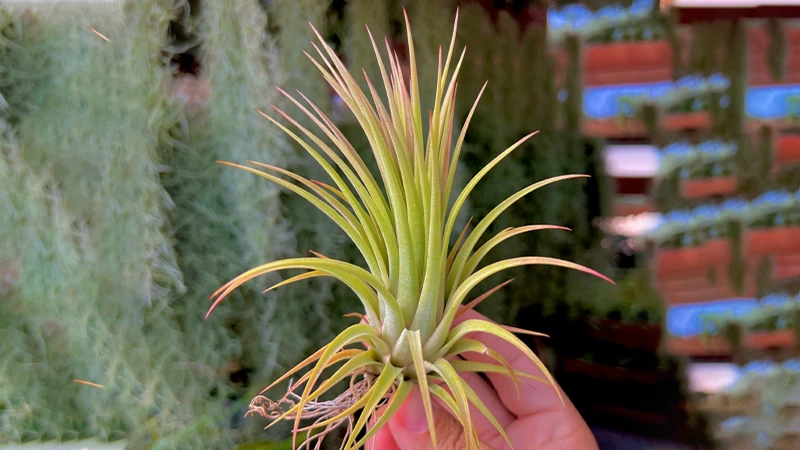
Big Boy is a broader and taller form of the previously mentioned Ionantha. This plant further turns into tints of red and pink, which eventually bloom into beautiful flowers. They grow up to 4 inches in length and can survive on the tiniest amount of water and even mist.
Tillandsia Ionantha
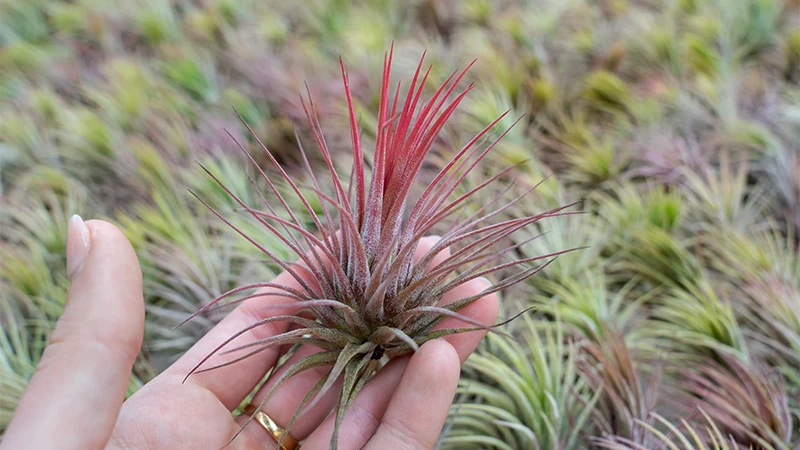
Tillandsia Ionantha is an air herb, also known as the Sky Plant. It has green tentacles infused with hues of red, pink, and purple, along with a flower in the middle. This can also be held on the tree using its root. The best part of planting this air herb is that it survives all weather year-round and is a low-maintenance indoor plant.
Tillandsia Usneoides
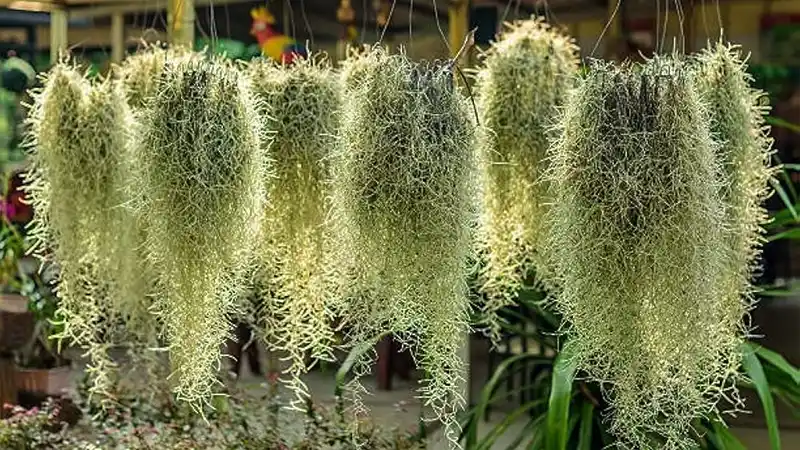
Native to Mexico, Central America, Bermuda, the Bahamas, the Southern USA, the West Indies, and South America, the Tillandsia usneoides is also known as Spanish Moss and Grandpa’s Beard. This plant has no roots, and it can beautifully lay on the ground, or you can put it on one of the branches.
Tillandsia Andreana
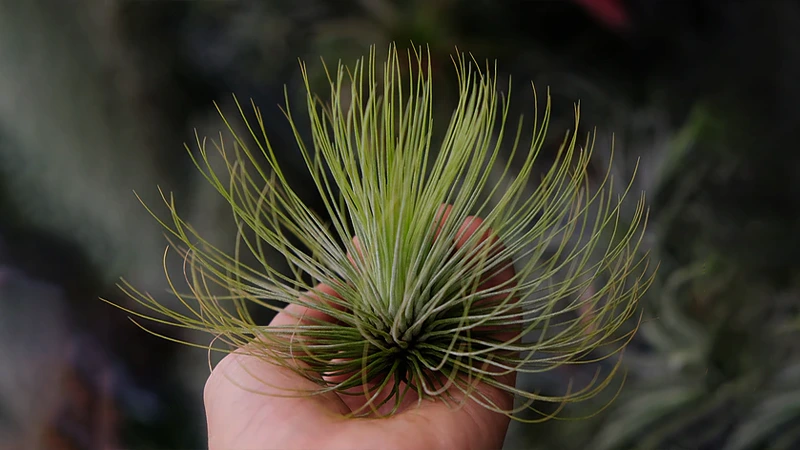
Tillandsia Andreana is one of the most unique-looking air plants that grows 3 inches in width and 2.5 inches in height. It comes from the country of Colombia and has thin leaves that extend in different directions and are rare in cultivation, as they do not grow on a stem.
Tillandsia Ionantha Huamelula Maxima
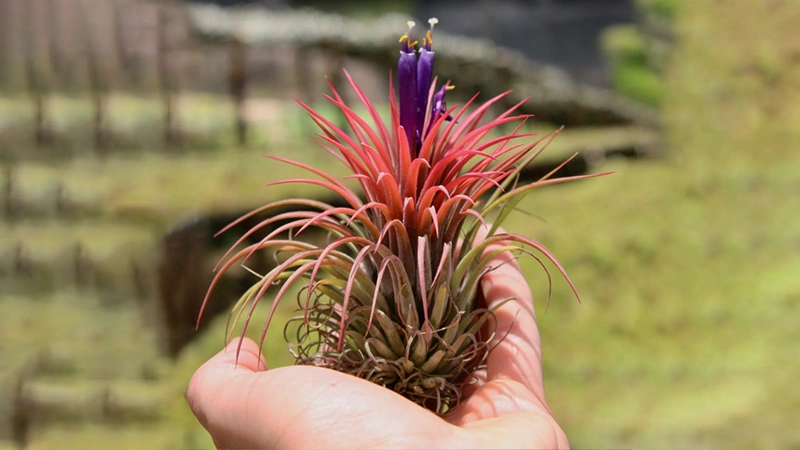
Ever seen a colorful pine cone? No, then that is exactly what Tillandsia Ionantha Huamelula Maxima looks like. It has a mix of three shades: green, red, and at last purple. Furthermore, it’s rare in cultivation and is found in Central America, Nicaragua, Mexico, Honduras, and Guatemala.
Tillandsia Cyanea
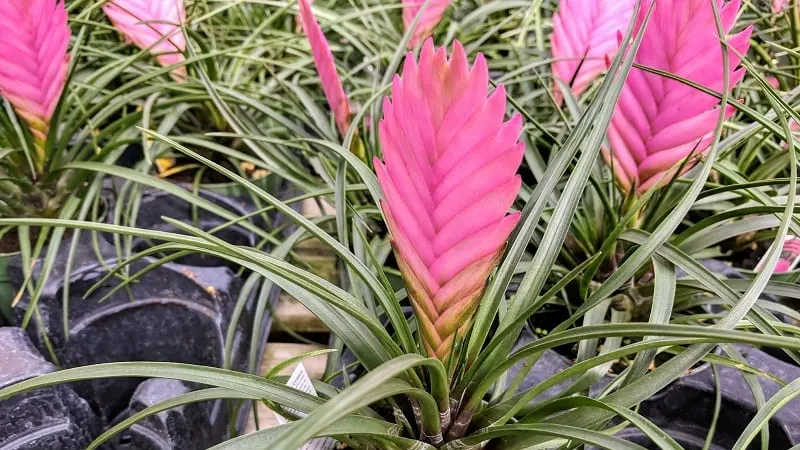
Known as the Wallisia cyanea, or Pink Quill, is a remarkably beautiful-looking plant with a pink feather-like leaf. They look pretty sitting in a pot in any garden area or around the sidewalk of your entryway. Moreover, in the blooming stage, it has a blue or purple-colored flower.
Tillandsia Aeranthos/Bergeri
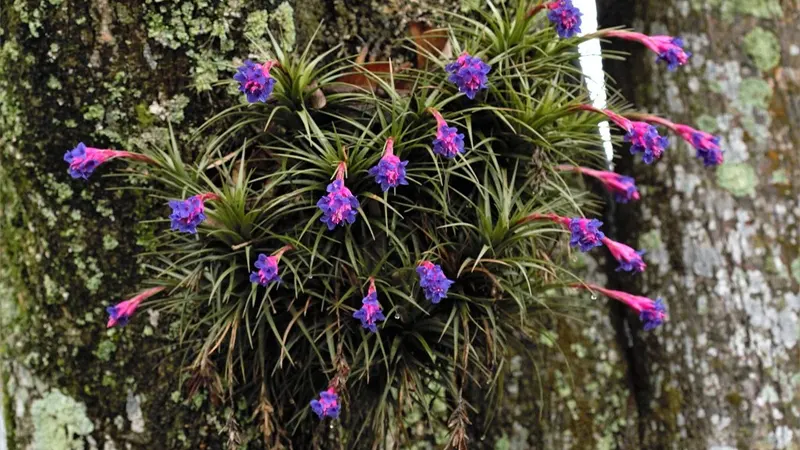
The Tillandsia Aeranthos or Bergeri, is one of the air plant varieties that naturally form into bunches. When bought from a storefront, you get a pair that further flourishes in the blooming season. They are also called the Mad Pupper as they keep producing their pups throughout their entire lives.
Tillandsia Bulbosa
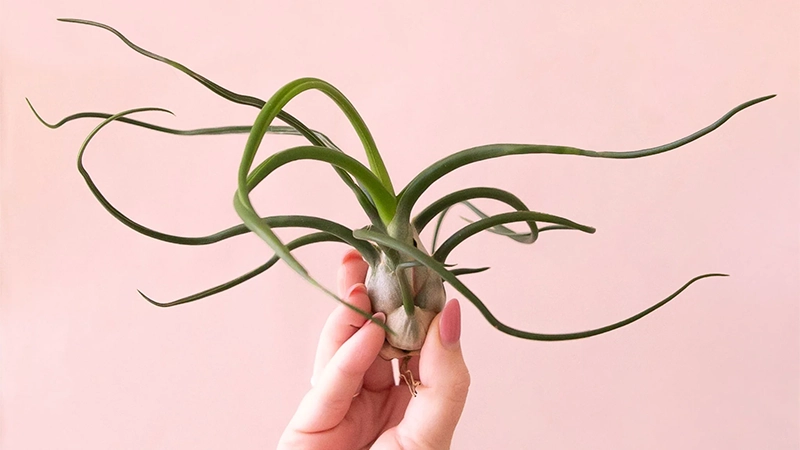
Tillandsia Bulbosa is an air plant that grows in Central America, the West Indies, southern Mexico, and South America. It is a rare species that can survive on very low water consumption. Other than this, these plants can even survive when turned upside down.
Tillandsia Capitata
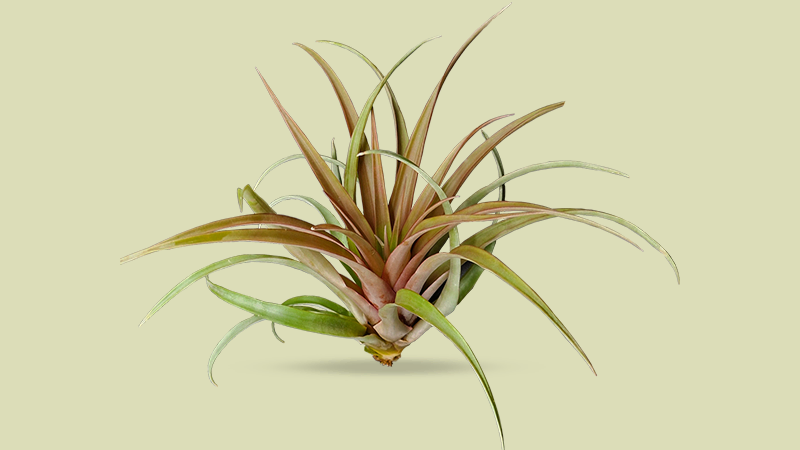
The Tillandsia Capitata is a big air plant, mostly found in the lawn or sidewalk of houses. In terms of looks, this variety can fool you into thinking that it is an aloe vera plant; however, in the booming season, it makes a different appearance with different colored flowers on it.
Tillandsia Houston
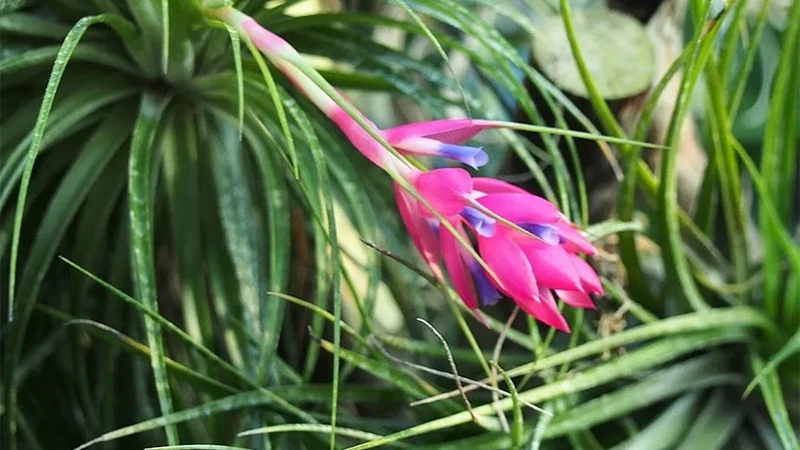
Tillandsia Houston is a hybrid product that involves the Stricta and the Recurvifolia plants. This collaboration was made by the botanist Mark Dimmitt in the Sonora Desert in Tucson. The leaves on this plant are silvery with hues of purple and pink; however, this is only visible during the booming season.
Tillandsia Didisticha
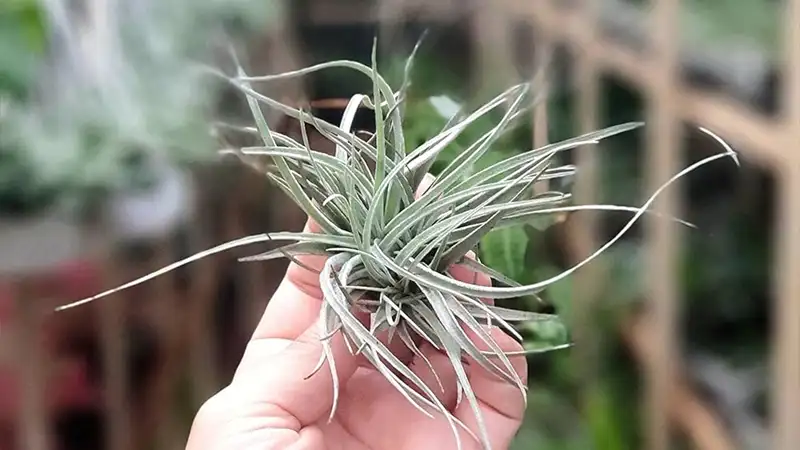
The Tillandsia Didisticha is native to Bolivia and Brazil and needs a minimum amount of effort to transform into the biggest size. In its blooming phase, it grows stunning white flowers and gains a height and width of 16 inches each under bright indirect light.
Tillandsia Fuchsii

Originating from the Guatemalan region, this Fuchsii is an efficient plant with several leaf blades, becoming a big spherical shape. Ensure that you are soaking this Tillandsia in enough water, once every 7 to 10 days, to give it an overall boost and enhance its absorbing needs.
Tillandsia Funckiana
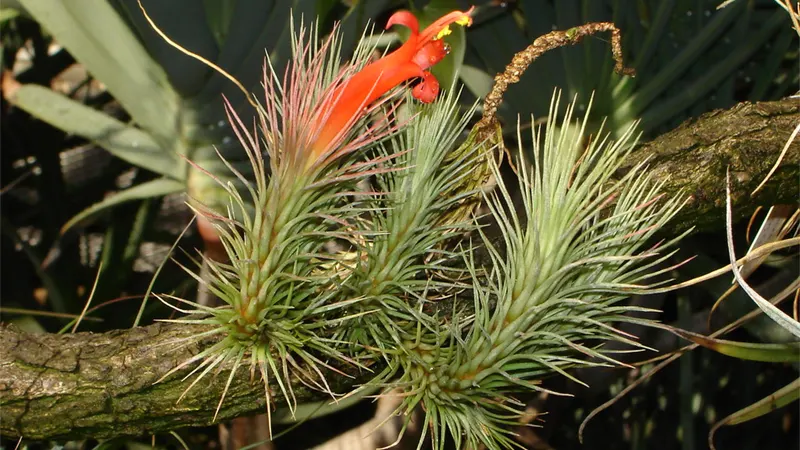
Another one on our list is the Tillandsia Funckiana, which has a bearded step that can also look like a thin and elongated pine cone. This plant turns completely red in its peak season with beautiful flowers of yellow color. Other than this, these can be 4 to 7 inches long in terms of height.
Tillandsia Gardneri

If you are looking for a better alternative for grass, then this can be the best one for you. The best part about the same is that it is really effortless and convenient to manage and take care of. Moreover, it looks very lushed out sitting in your lawn or sidewalk.
Tillandsia Ionantha (Fuego)

Native to Central America and Mexico, Tillandsia Ionantha (Fuego) can be another color element in your garden. It is really low maintenance and is a perfect pine where you can see different hues of bright and pretty tones like lime green and red.
Tillandsia Stricta
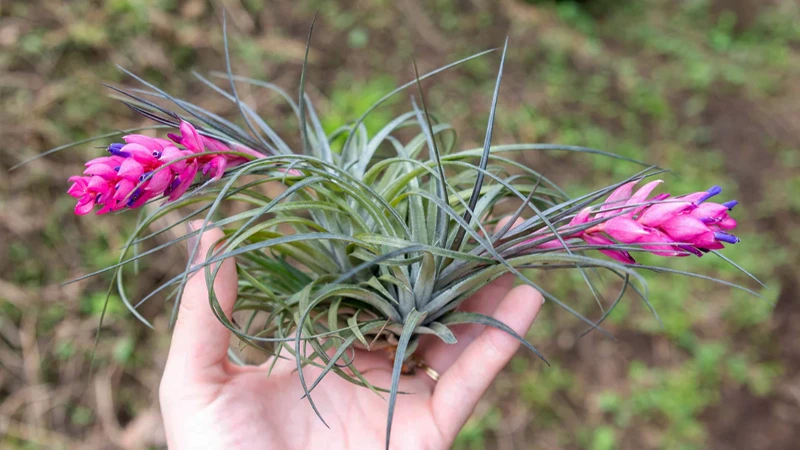
The second last on our airplant list is the Tillandsia Stricta, which is famously found in Venezuela, Paraguay, Uruguay, and Guyana. These plants bloom exceptionally in summer, where they also end up producing pretty pups with pink and purple accents. Remember that these green fellows don’t like the extreme freezing environments.
Tillandsia Chiapensis
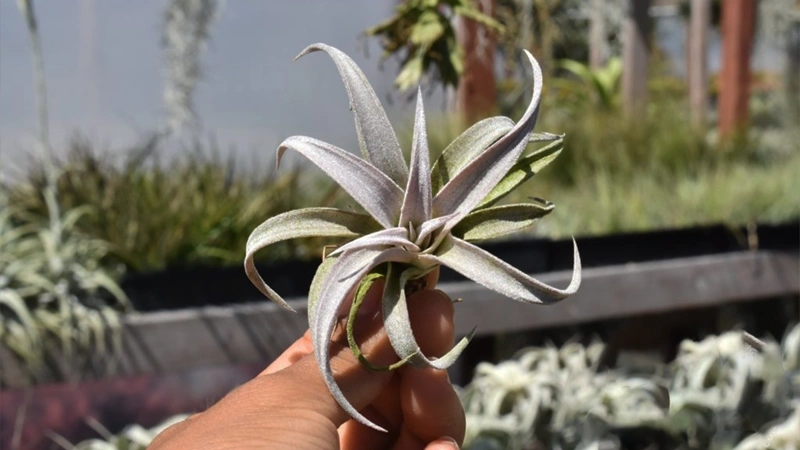
The Tillandsia Chiapensis is native to the state of Chiapas, in the country of Mexico. For its maintenance, the plant needs only 0.8 cups of water every 12 days, making it a wonderful pick for beginner-level gardening and planting. In terms of length, the small version is 3 inches and the medium one is 4 to 5 inches.
This was the descriptive list of thirty-four air plants that you can bring to uplift the essence of your personal space.
How to Take Care of Air Plants at Home?
We have mentioned how it is so easy and simple to take care of these species of flora and fauna. However, there are things that you should be aware of and implement when taking care of a plant.
- Let the plants sit and get soaked in water for five to twelve hours.
- Make use of the rainwater or bottled drinking water.
- Shake off the plants till they are completely dried off.
- Feed them with water-soluble fertilizers in the water before soaking.
- Keep the air plants in an environment where temperatures are between 50 and 90 degrees.
- Do not keep them in snowy or freezing weather.
- Make sure they are put in bright indirect sunlight for at least four to six hours daily.
Keep scrolling to find out about the adequate water requirement of these airplants.
Simple Method for Watering Your Air Plant
Water is the most essential factor when it comes to living organisms. However, in the case of air plants, it can be the biggest destroyer. For this to not happen to your precious Tillandsia, below we have mentioned the right way to water airplants.
- Take a bucket or glass bowl, according to your plant.
- Fill it with either rainwater, lake, or well water.
- Dunk the entire Tillandsia into the bucket.
- Leave it for thirty to sixty minutes.
- Gently shake off all the excess water.
- Now, put the plant upside down for everything to dry out.
- Place the plant in an airy room where sunlight is proper.
Repeat the same process once every 10 to 12 days for the plant to stay evergreen. If you forget or miss watering your plant, you can also try misting the entire thing once every five to seven days.
Air Plants: Pests and Diseases Associated
If you are planning on bringing an air plant into your garden area, here are a few key essentials that you must take into consideration to prevent your Tillandsia from getting a pest or disease.
- Most times, you will have to take regard to insects and bugs; in case you find them, spray them right away with a Tillandsia-safe pesticide.
- Give it just the right amount of water; more or less water can make the plant rot from the inside.
- Be aware to check for rotting leaves or any fungal diseases; this is very common when the plant is damp.
- Unlike most plants, neem oil with air plants can be the real villain, as it will prevent the Tillandsia from absorbing water.
Immediately isolate the infected plant from the others before it ends up passing the diseases everywhere.
Specific Garden Design Suggestions
If you are a beginner and looking for ways to store your plant in the right way, then the underneath-mentioned ways will surely help you do the same. So read carefully!
- For the indoor settings, place the Tillandsia near a window.
- You can also put your plant in a sunny bathroom, as there will be sun and humidity in the same place.
- Furthermore, you can also put it near a pool or screened porch where they get moisture.
We would recommend not putting the airplant outside, unless you live in a humid environment, as they can actually damage them.
Wrapping Up
Air plants are low-maintenance plants with zero nutritional requirements, making them the right choice for people trying gardening as a hobby. However, be sure to make use of the watering method mentioned above, as not watering properly can eventually cause your cherished Tillandsia to fall out of shape.
Are Tillandsia air plants?
Yes, Tillandsia is the botanical name for air plants; under this category fall around 650 species of different plants.
What are the few names of air plant varieties?
Some names for air plants are Ionantha Gautemala, Xerographica Thick Leaf, Ionantha Pink, Tillandsia Caput Medusae, Ionantha Druid, Tenuifolia Bush, etc.
How to take care of air plants?
The air plants are very beginner-friendly, meaning they don’t require much care. However, you’ll have to give them bright, indirect light and frequently soak, mist, or water these plants for adequate growth.
Tillandsia chiapensis by the Bromel
